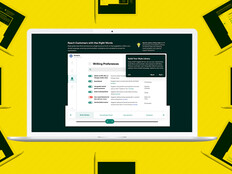Q&A: Implementing Electronic Health Records in Senior Living
Senior living communities, skilled nursing facilities and home health organizations are increasingly exploring and investing in data management and workflow technology.
The change allows organizations to better coordinate care within their own facilities while fostering communication across the broader healthcare system. Although both patients and providers have much to gain from the use of electronic health records (EHR), asking the right questions, evaluating options and implementing a solution can be an overwhelming task.
We sat down with Louis Lenzmeier, vice president of business development at MatrixCare, to learn more about challenges to and best practices for implementing EHR in senior living.
HEALTHTECH: What are the biggest barriers to adoption you see senior care organizations facing?
LENZMEIER: The biggest shift is making a change in methodology and culture. There is a fear of change. Teams don’t want to go through an implementation period and new training, or they’ve had bad experiences with technology in the past.
HEALTHTECH: What is the best way to involve staff and gain successful buy-in? Who should be involved in the decision-making process? What does it look like?
LENZMEIER: The main goal is to make sure everyone who will be using the system is engaged and successful. All staff — clinicians, billing, social work, activities — should be involved in some capacity in the selection and planning of the EHR implementation. Each discipline provides valuable feedback on the operational changes that need to be made in working with the resident and ensuring proper workflow. When a multidiscipline team is involved from the beginning, even if they are just informed, staff buy-in of the overall system is much more likely.
Operators and main decision-makers will want to ensure that they have a clear plan for implementation and for training the staff on the product to make sure that they are maximizing its use and potential.
Overall, you have to think carefully about what the right solution is for your team as a whole, and communicate the value once a final decision has been made.
HEALTHTECH: What considerations are most important for the implementation process?
LENZMEIER: The implementation should focus on understanding the needs of each organization and facilitating staff buy-in, managing change and ensuring rapid adoption of the technology.
HEALTHTECH: What are the top considerations when evaluating a solution and technology partner?
LENZMEIER: The specific technology solution is important — each senior care community or organization can be very different. Is this EHR product designed to meet your individual care-level needs? Is it versatile to accommodate customization?
It’s equally important that it achieve interoperability goals. How is data shared? Is this technology preparing you for the increased data exchange ahead? Has this EHR vendor committed to the HIMSS interoperability pledge? Does it offer APIs [application programming interfaces] for vendors to integrate?
Look for a company with a strong client-service focus. Some software companies just sell the software, but those with a true human touch will have their own teams who run implementation and training. They’ll have customer service teams available to get you the answers you need, and account managers with a single focus on client engagement with your business and your use of the product. Having someone who understands your needs and is there every step of the way will be extremely important.








